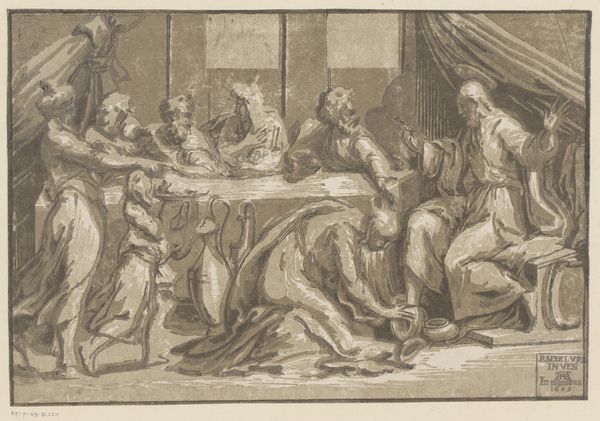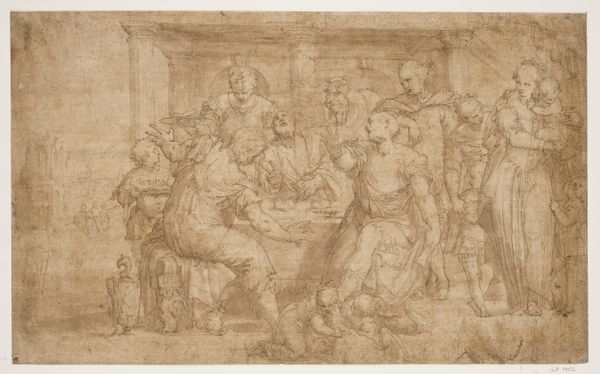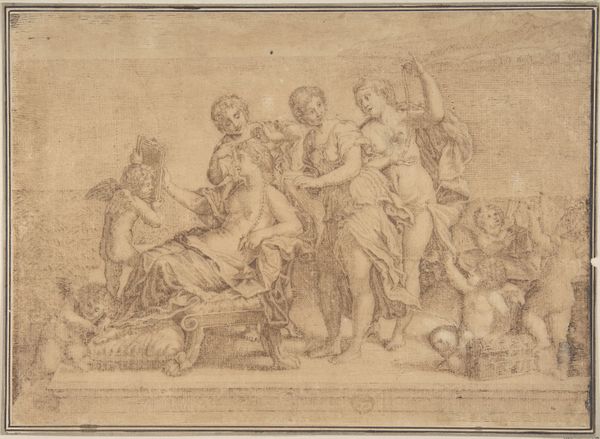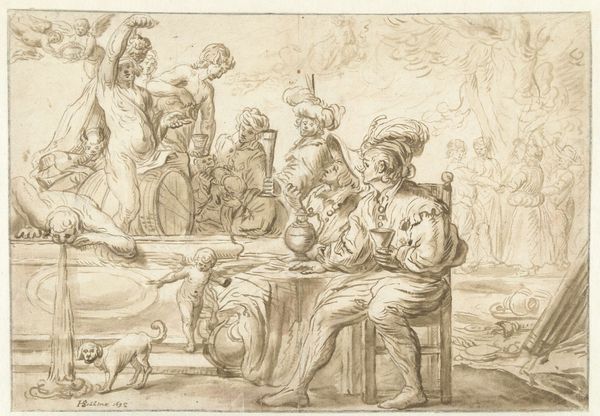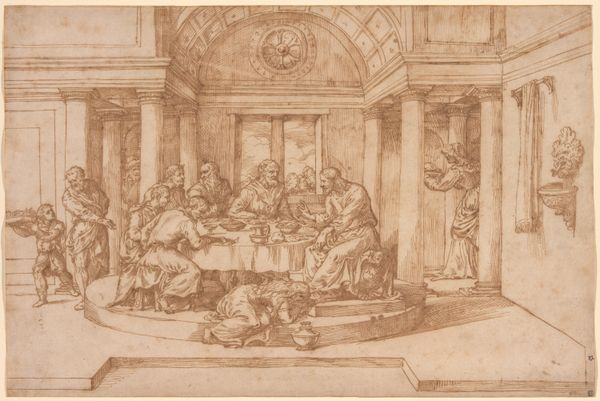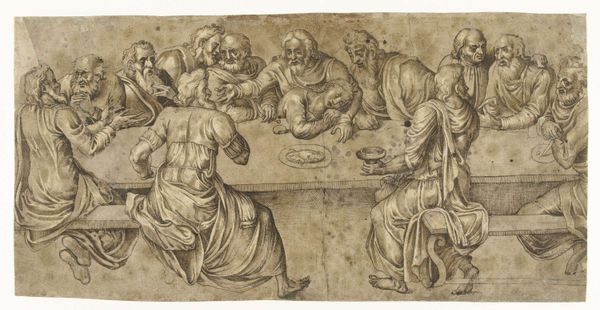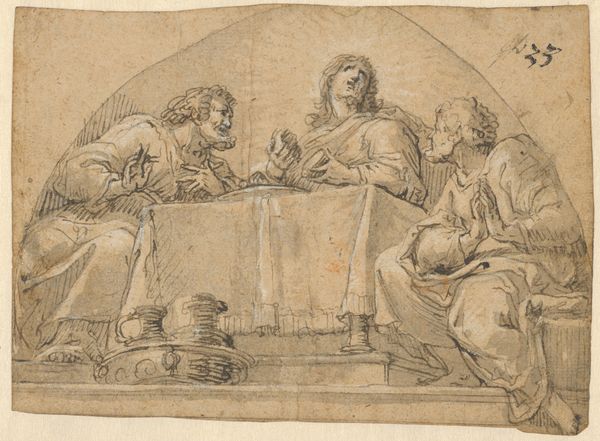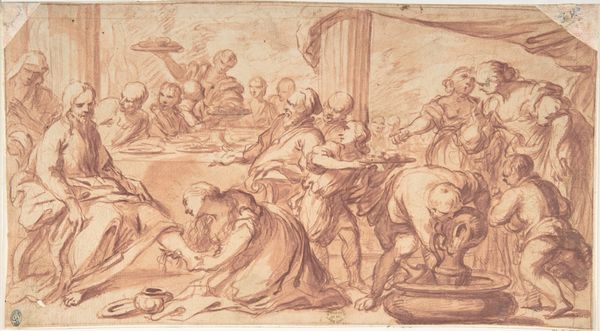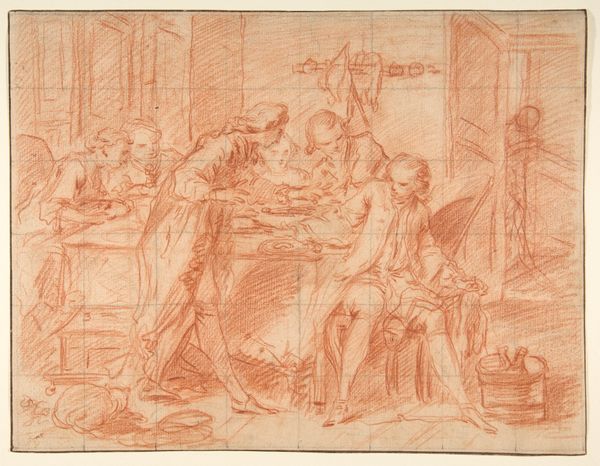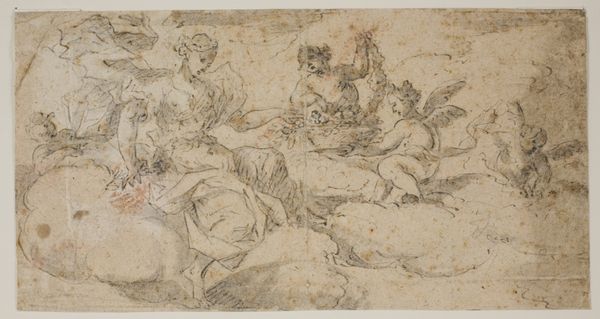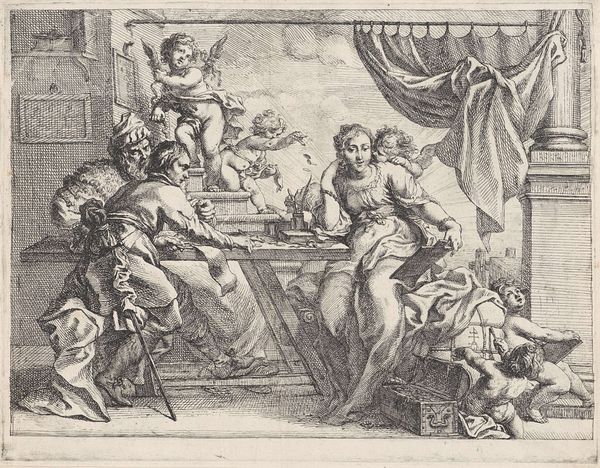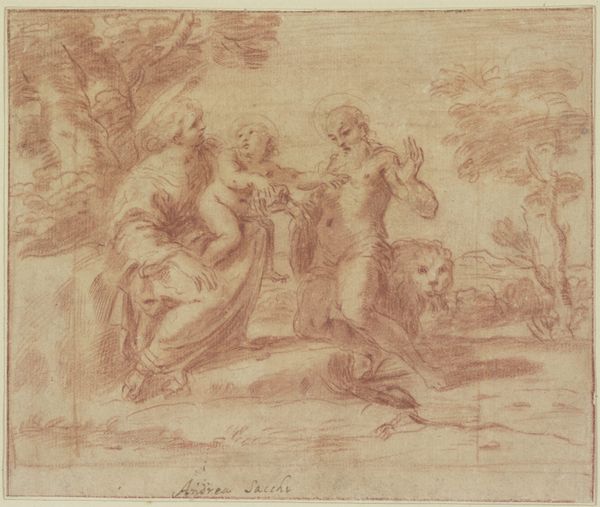
drawing, red-chalk, paper, ink
#
portrait
#
drawing
#
narrative-art
#
ink painting
#
red-chalk
#
pencil sketch
#
charcoal drawing
#
figuration
#
paper
#
11_renaissance
#
ink
#
history-painting
#
italian-renaissance
Copyright: Public Domain
Curator: This drawing, currently held at the Städel Museum, is titled "Die Speisung Christi in der Wüste," or "The Feeding of Christ in the Desert," attributed to Ludovico Carracci. Editor: The immediate feeling I get is one of movement and generosity. All these figures, caught in mid-action, serving... It's a dynamic depiction of abundance. Curator: Absolutely. Carracci, who was pivotal in the late Renaissance and early Baroque periods, likely created this work as a preparatory sketch, maybe even for a painting of this subject matter. The use of red chalk, ink, and paper provides the texture and depth to suggest the narrative and dramatic moment depicted. Editor: Yes, you can almost see the Renaissance masters whispering into his ear. Though, that chalk gives it a raw, intimate feel, as if you’ve stumbled upon the artist mid-thought. Curator: Think about the context – during the Counter-Reformation, art played a vital role. Religious scenes had to be powerful, persuasive. Carracci’s focus on this miracle, the feeding of the masses, would’ve emphasized Christ’s divine power but also themes of charity and communal support. The drawing serves as the social messaging of this important biblical moment. Editor: You can feel it. Look at how the figures lean in, their gestures full of urgent compassion. And the light – it seems to emanate from the very food being offered. You know it's only red chalk and ink, but he makes it feel real. I wonder, what would the viewers have felt looking at the piece, especially within the constraints of society at that time? Curator: They would have found solace and, perhaps, a call to action. The Renaissance artists provided not just the look but the interpretation and implementation of key messages within their local culture. It’s art being intentionally woven into the socio-political fiber. Editor: That's interesting and helpful. For me it goes even deeper – it makes me want to grab a plate, connect, share. The human touch translates, even over centuries, as an experience rather than an academic concept. Curator: Exactly. Even today it challenges the notion of the power of image and representation in any historical framework. Editor: Well, it appears even after a few centuries, some art still feeds our souls in unexpected ways.
Comments
No comments
Be the first to comment and join the conversation on the ultimate creative platform.
